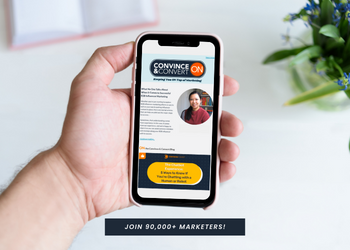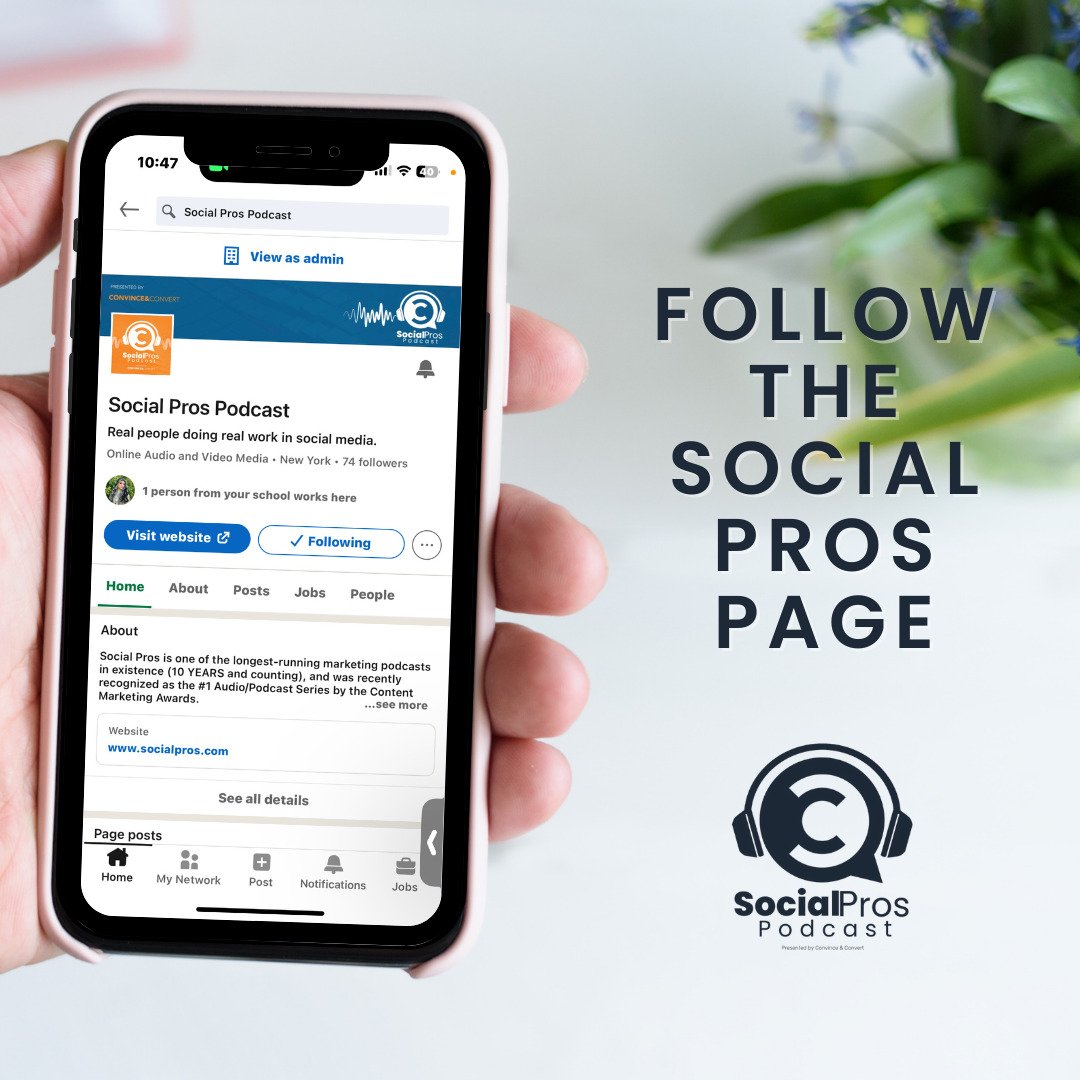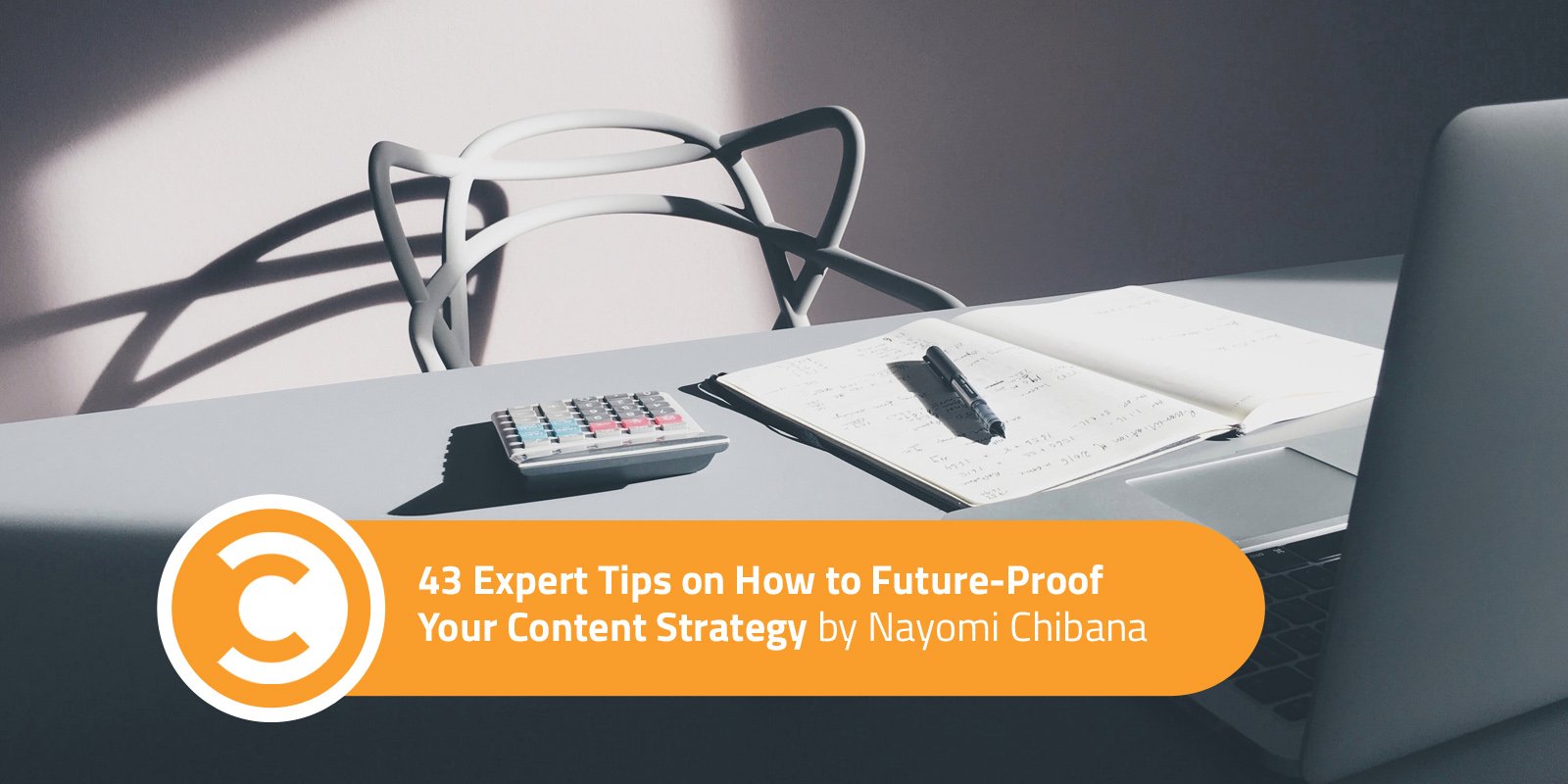
Listen to this blog post as a podcast:
Two years ago, well-known blogger Mark Schaefer coined the term “content shock” to describe an inevitable reality in the digital marketing world: too much content and not enough time to consume all of it.
Using simple economic terms, he argued that the “supply” of web content is doubling every nine to 24 months, while “demand”—which is Internet users’ ability to consume content—is finite. Even if mobile devices have allowed us to increase media usage to 12 hours and nine minutes per day, there’s only so much texting and tweeting we can do during the wee hours of the night.

Content creators have known for a while now that a big problem has been looming on the horizon. But much like climate change deniers, some were hoping the uncomfortable truth would go away and that, somehow, the possibilities of content creation would be limitless.
They were wrong.
Content shock is a real thing, and it’s already here. Nowadays, it’s no longer enough to produce “great content”—you have to give it legs through a combination of factors, such as influencer marketing, brand development, and social proof.
And even then, it can fail to return the expected results. Take a look, for example, at how the average shares per content item published on authoritative sites such as Buffer, Copyblogger, and Social Media Examiner steadily decreased over the course of 2015.
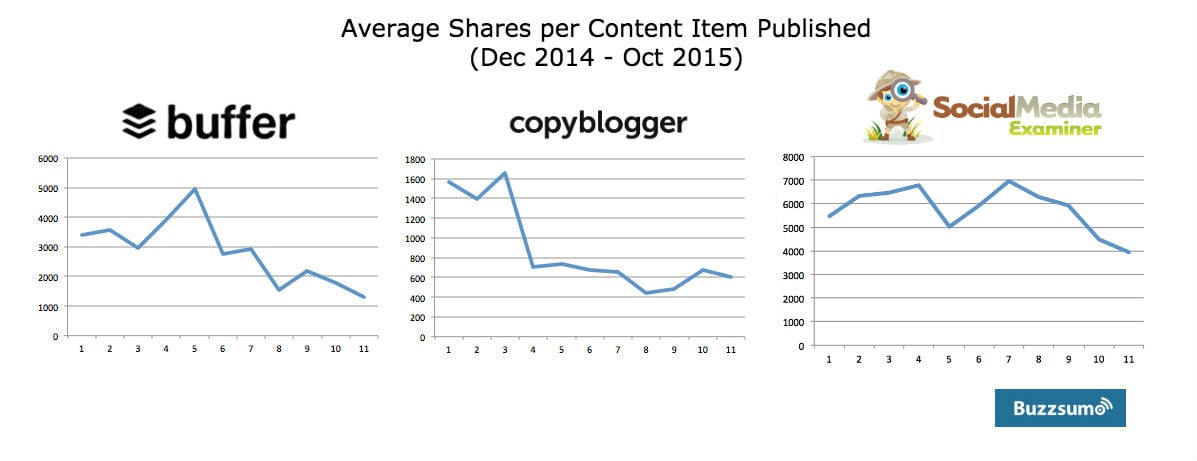
Meanwhile, the smartest content creators out there are busy figuring out how to find untapped content niches and, in Schaefer’s words, “igniting” content so it “rises to the top.”
Insights from Top Content Marketers
At Visme, we were so intrigued by the challenge posed by content shock that we reached out to 43 top content marketers and social media influencers and asked them: What’s your best advice for future proofing your content strategy against “content shock” and “content fatigue”?
Here is what they had to say in their own words. Influencers’ complete answers can be viewed in the e-book below, and for those who would rather skim through their most actionable advice, tweetable quote cards are provided in the next section.
You can also view the interactive version or download the PDF.
Jeff Bullas

“It is a continuous process. It means keeping an eye on emerging content trends and networks that are cutting through the growing noise and clutter. The fast changing social and mobile web demands it. That means testing emerging networks and content like Snapchat, Instagram stories, and live streaming. What worked last year doesn’t mean it will work today. The use of ‘Artificial Intelligence’ and marketing automation will also become vital to scaling and measuring your marketing effectiveness.”
– Founder of JeffBullas.com
Lee Odden
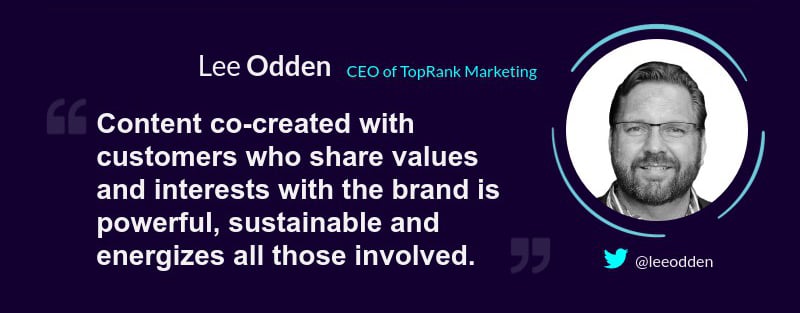
“The overabundance of content that gets ignored is an issue for marketers that don’t differentiate or engage their audience to participate in content creation. Imagine if a brand regularly involved their customers and community in content creation and the inspiration to share and engage that would result. Co-creating content with customers and a community that shares values and interest with the brand is powerful and sustainable content that stands out and energizes all involved.”
– CEO of TopRank Marketing
Steve Cartwright

“The best way to protect against future content shock and content fatigue is to utilize your content to build up your own content delivery networks. If you imagine being able to create a piece of content and then being able to put this content in the hands of potentially hundreds of thousands of interested audience members, this can be achieved by building up your own active social media followings, by building up your email lists, and by becoming a perceived leader in your niche, at least in the eyes of your audience. By doing this you not only create an active marketplace for your products or services—you also build up something that helps guarantee you remain relevant and active in the eyes of your audience.”
– Digital Business Growth Expert
Donna Moritz
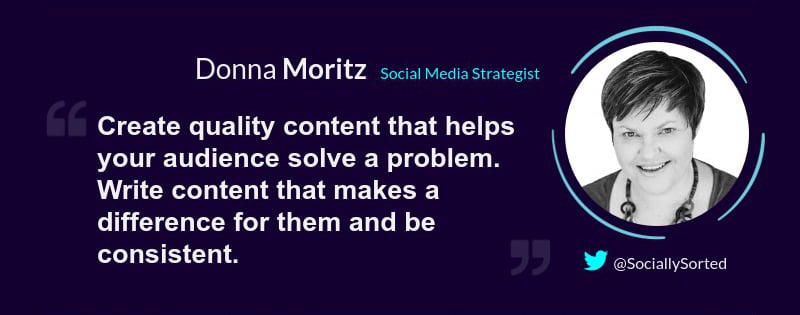
There are a few things that businesses can do to buffer against the sheer volume of content online:
- Create quality content that helps your audience solve a problem. Write content that makes a difference for them and be consistent. Consistency trumps many things.
- Focus on “core content”—this is content that is quality and lives on your website, podcast, or video blog. Try to create at least one quality piece of core content every week.
- Focus a lot more on promoting and sharing your content. Creating the content is just the beginning. You should be building followers and engagement on at least one or two key social platforms with systems in place to share content that drives people back to a platform that you own. Create micro-content on other platforms by all means, or use live video to engage followers, but keep your core content on your website where it is not controlled by another platform.
- Learn to love ads. Use them to promote your core content. Algorithms are not going away, and now is the time to get savvy with advertising on Facebook.
- Ask your audience what they want. Run surveys, or ask in your pages or groups. The more you know about their needs, the better content you can create that catches attention and gets them to take action.
– Founder of Socially Sorted
Rand Fishkin
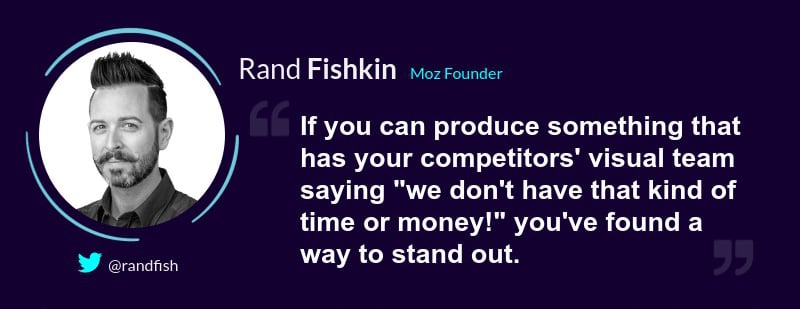
“Put in more work and effort than you think your competition would be able to justify. If you can produce something that has your competitors’ visual team throwing up their hands and saying, ‘We don’t have that kind of time or money!,’ you’ve found a way to stand out.”
– Founder of Moz
Sujan Patel
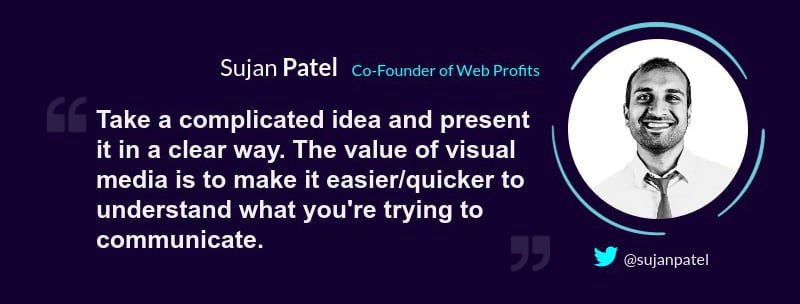
“Take a complicated idea, and present it in a clear way. The value of visual media is to make it easier/quicker to understand what you’re trying to communicate, not to be an infographic version of a blog post.”
– Co-Founder of Web Profits
Larry Kim
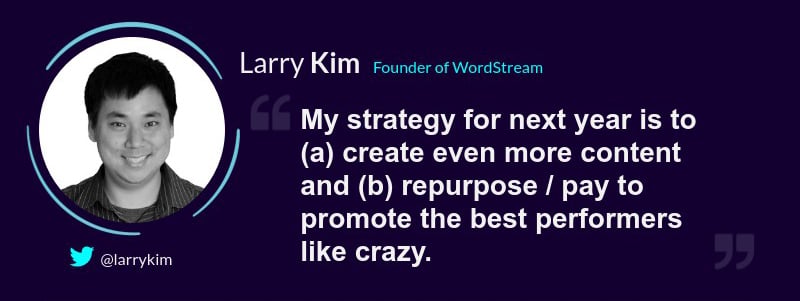
“My strategy for next year is to (a) create even more content and (b) repurpose/pay to promote the best performers like crazy. The result is that you get both higher quantity, because you’re trying out so many new pieces, and higher quality, because you’re getting much more mileage from the top performing pieces.”
– Founder of WordStream
John Rampton
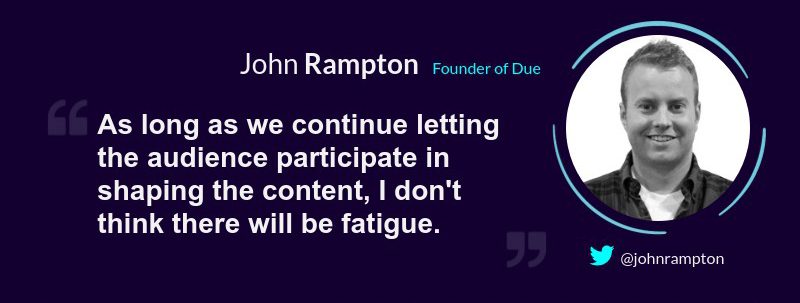
“Content is becoming more visual and interactive with the use of video, which removes considerable risk of any fatigue. As long as we continue letting the audience participate in shaping the content, I don’t think there will be fatigue. We feed off of their responses and feedback, which helps us come up with new and innovative content, whereas traditional mediums previously used did not allow for this interaction, so it’s easy to see why people would get tired of advertisements.”
– Founder of Due
Ian Cleary
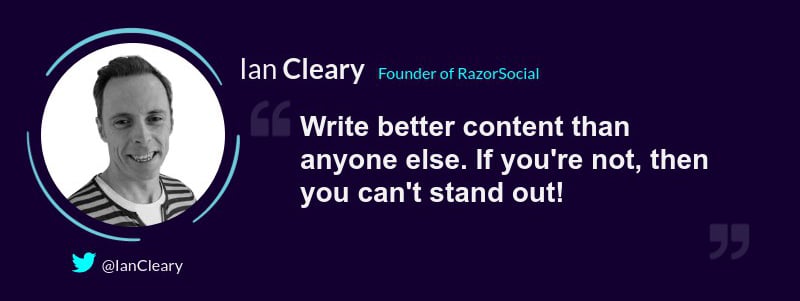
“You can cut through the noise if you’re adding value, not more noise. You also need to stand out as a brand. There’s so much poor quality visual content out there. Write better content than anyone else. If you’re not, then you can’t stand out!”
– Founder of RazorSocial
Barry Feldman
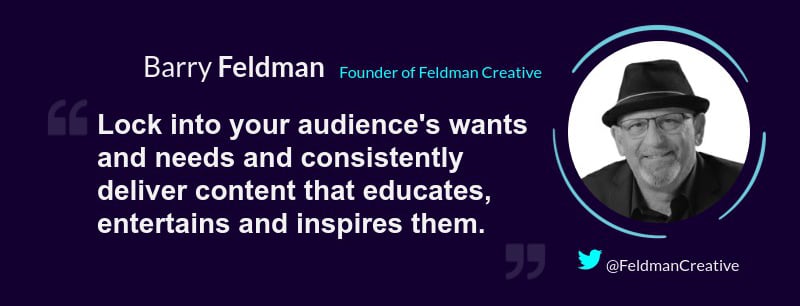
“The best you can do is… well, the best you can do. You can’t future-proof your content, but you can become a great content marketer by locking into your audience’s wants and needs and consistently delivering content that educates, entertains, and inspires them. Obviously, you can’t slow down the fire hose that sprays content online every minute, but you can commit to creating and publishing more useful content, optimizing it for search, and stepping up your distribution in the channels where your ideal audience plays ball.”
– Founder of Feldman Creative
Neal Schaffer
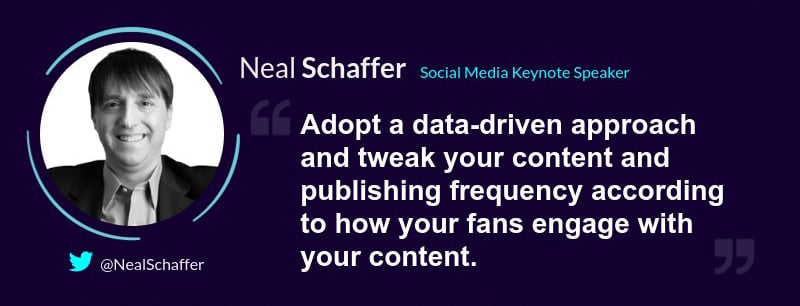
“Content fatigue has actually been around for sometime. In Japan, they have been saying this since 1998. It’s simply supply and demand. The only way to future-proof your content strategy, then, is to have a data-driven approach. Tweak your content publishing frequency and content according to how your fans engage with your visual content. It sounds simple, but marketing departments tend to want to push content and stick to editorial calendars without having an adaptive approach, which is especially important with visual social.”
– Social Media Keynote Speaker
Rebecca Lieb
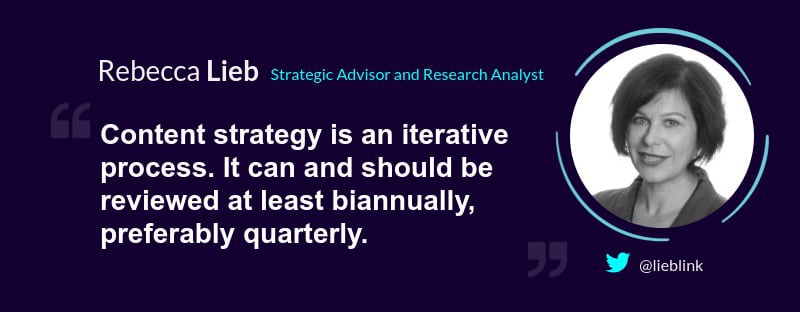
“Nothing could be further from the truth. Content strategy is an iterative process. It can and should be reviewed at least biannually, preferably quarterly. That’s how you future-proof it. By continual evaluation, now and in the future.”
– Strategic Advisor and Research Analyst
Sam Hurley
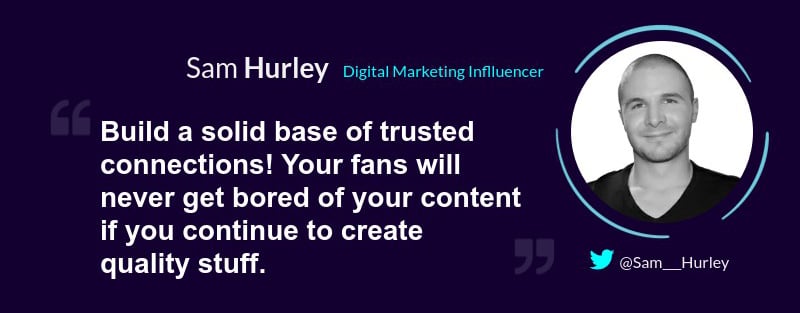
“Build a solid base of trusted connections! Your fans will never get bored of your content if you continue to create quality stuff.
The best part? They will happily share it for you. When that happens, it has much greater chance of being opened and shared by others because it isn’t deemed as promotional content from the brand itself.
These people may then turn into fans, and the cycle continues . . .”
– Digital Marketing Influencer
Brian Honigman
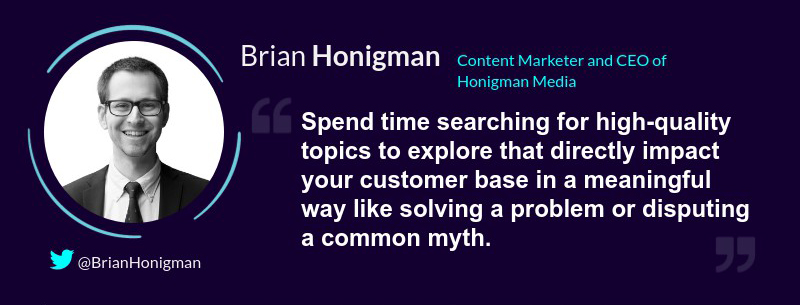
“To avoid content shock and fatigue, create content on topics your audience genuinely cares about. Spend more time searching for high-quality topics to explore with your content that directly impact your customer base in a meaningful way, like solving a problem, disputing a common myth, entertaining them, etc.
Secondly, spend less time creating more content and more time creating compelling content that addresses a subject like no other piece of content on that topic has thus far. Review the search results on the subject you’re covering, and identify how to dive into the same subject in more impactful ways than existing resources already ranking from competitors and others.”
– Content Marketer and CEO of Honigman Media
John Hall
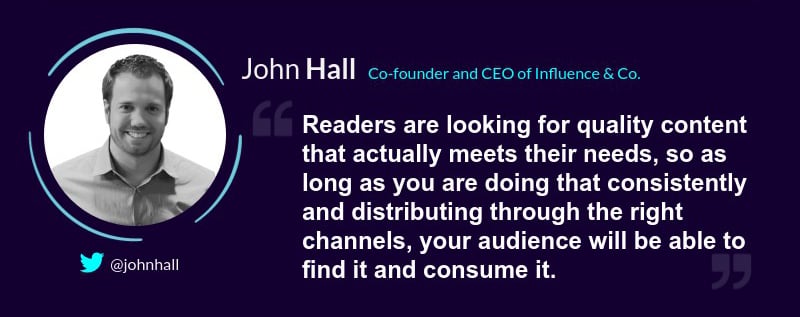
“Readers are looking for quality content that actually meets their needs and engages them. So as long as you are doing that consistently and distributing through the right channels, your audience will be able to find it and consume it. There probably won’t be a time when your audience is tired of content that’s too good and designed just for them, so the ideas of shock and fatigue and overload aren’t really ones to worry about if your content is high-quality, targeted, and engaging.”
– Co-founder and CEO of Influence & Co.
Andy Crestodina
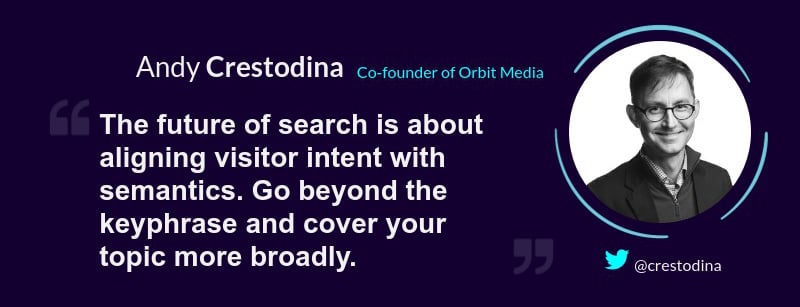
“Empathy with the audience. Networking and collaboration. Creative and persistent promotion. Continual optimization. Laser-focus on the goal. These will future-proof your marketing. But if you’re looking for a tactic, here’s a good one for SEO: target the topic, not the keyphrase. Find and include the phrases related to your primary keyphrase, and you’ll have adapted your content for semantic SEO. The future of search is about aligning visitor intent with semantics. Go beyond the phrase, and cover your topic more broadly. “
– Co-founder and CEO of Influence & Co.
Martin Jones
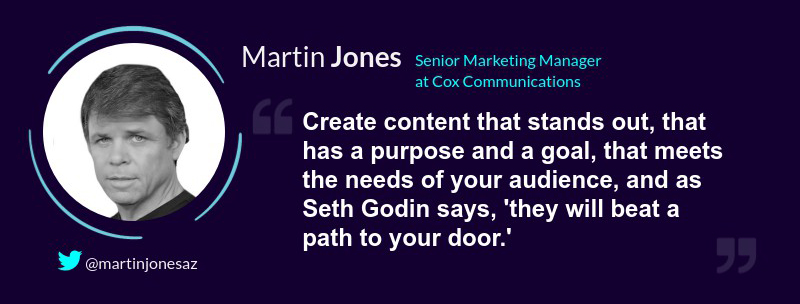
“One of the best ways to future-proof your content strategy against ‘content shock’ or ‘content fatigue’ is to ensure you’re focused on quality, not quantity of content. These days, there isn’t much of an argument for the need for more content on the web—however, a strong case can be made for the need for better content. Create content that stands out, that has a purpose and a goal, that meets the needs of your audience, and as Seth Godin says, ‘They will beat a path to your door.’”
– Senior Marketing Manager at Cox Communications
Lilach Bullock
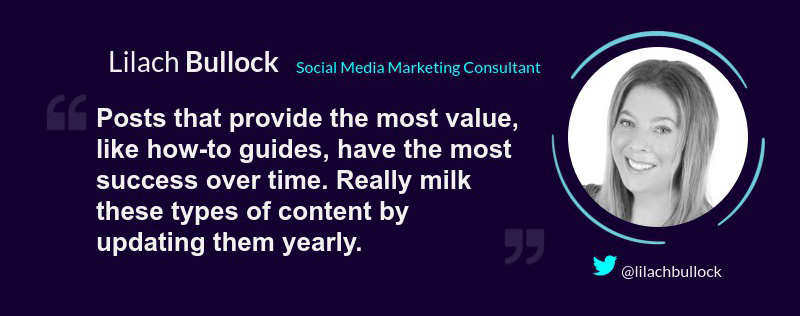
“It’s quite difficult to predict what will be successful in a few months, not to mention years; most industries are in constant motion, making it hard to tell what content will stand the test of time. In my experience, I’ve found that the content that has lasted the longest and had the most success over time are the posts that provided the most value, like how-to guides. To really milk these types of content over time, try to update them yearly, for example. Make it clear you’ve made revisions, and that the guide is completely up to date, and you can re-use that content for years.”
– Social Media Marketing Consultant
Glen Gilmore

“To future proof your content strategy, simply focus on consistently creating and sharing really good content. Mastery will always matter and percolate to the top.”
– Strategic Consultant in Digital Marketing
John Jantsch
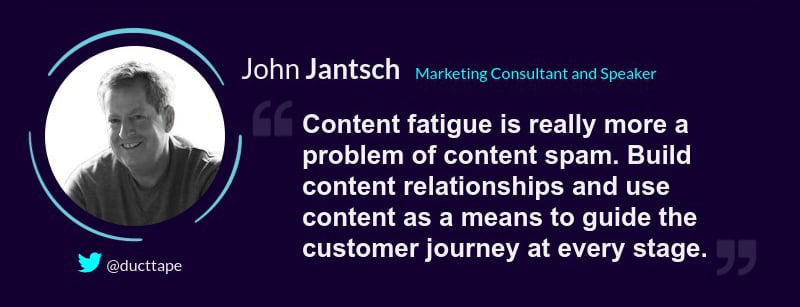
“I think the idea of content fatigue is really more a problem of content spam. You future proof your content by building content relationships and using content as a means to guide the customer journey at every stage.”
– Marketing Consultant and Speaker
Buddy Scalera
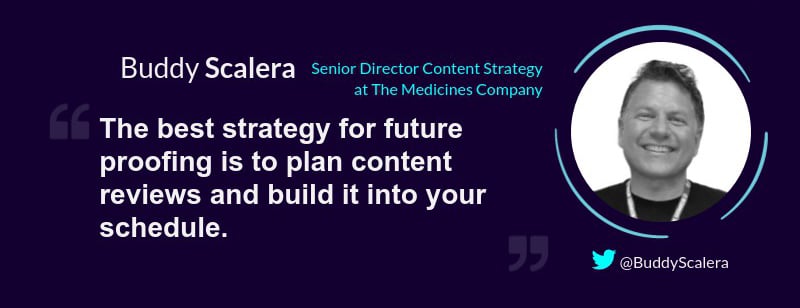
“I’m not sure you can future proof your content. That’s almost like suggesting you can set it and forget it. I don’t think you can do that. Your content needs to be maintained. You may need to add new content, update old content, or find new ways to make it work in different channels. The best strategy for future proofing is to plan content reviews and build them into your schedule. For example, you may need to review your content every year just to make sure it still makes sense, particularly as new competitors enter the marketplace and the communication channels evolve. It’s not easy, but being competitive never is.”
– Senior Director Content Strategy at The Medicines Company
Ted Rubin
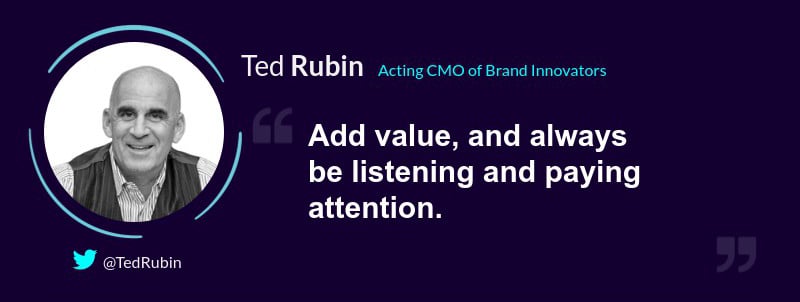
“Test, re-test, evolve, and drive a truck through content that creates conversation. Add value, and always be listening and paying attention.”
– Acting CMO of Brand Innovators
Juntae DeLane
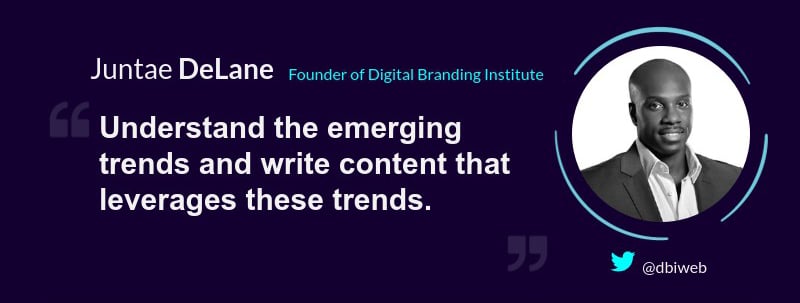
“Focus on developing content that consumers will continue to want in the future. Understand the emerging trends, and write content that leverages these trends.”
– Founder of Digital Branding Institute
Carla Johnson
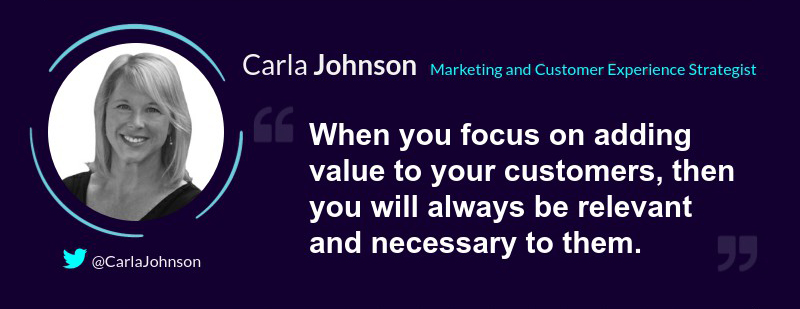
“The best thing that marketers can do to future proof their content strategy is to put customers at the heart. When you focus on adding value to your customers, value that’s separate and distinct from what you sell, value that helps them solve their problems, then you will always be relevant and necessary to them. And you won’t shock them with too much content, and you won’t wear them out by pushing content in front of them that’s not helpful.”
– Marketing and Customer Experience Strategist
Pratik Dholakiya
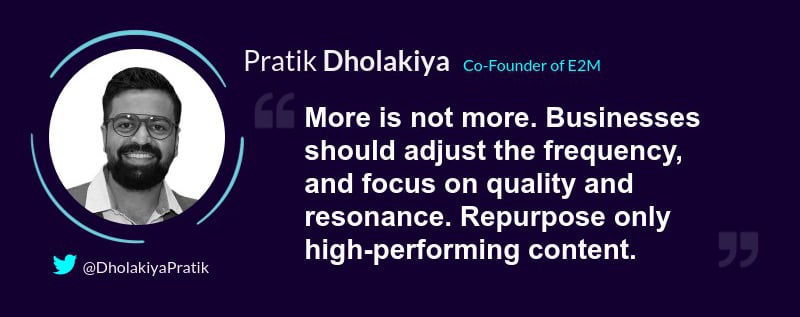
“Using social media as a content delivery device remains an effective way for businesses and brands to create push-pull communication with consumers. However, we may be past the era of ‘high volume’ social media posts that deafen audience. More is not more; businesses should adjust the frequency and focus on quality and resonance. The goal is to allow your customers to enjoy, not be annoyed by superfluous posts. Acquiring your digital audience is time-consuming and expensive, but alienating them is probable if your focus is on density, instead of authenticity and quality. Repurpose only high-performing content, and avoid relying on recycled content; always focus on generating new and relevant collateral.”
,
– Founder, The 20 Media
Chad Pollitt
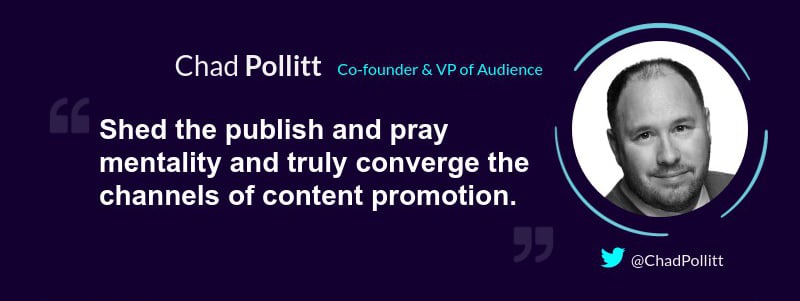
“Shed the publish-and-pray mentality, and truly converge the channels of content promotion. For too long, marketers have relied on owned media and organic visibility to drive traffic and conversions. Breaking through ‘content shock’ requires the adoption of both earned and paid media promotion. This can come in the form of media outreach, influencer marketing, and native advertising via social, email, programmatic, and editorial.”
– Co-founder and VP of Audience
Ron Sela

“To future proof content, you should always ask yourself four questions while creating or reviewing the content. The most important questions are:
- Will this content be relevant to future readers? An easy way to ensure the content will maintain relevancy is to make sure the content isn’t time-sensitive. Consider only using content that has no known expiration date.
- Is the content factual, as well as thoroughly researched with reliable sources? When content is not factual, it tends to lose credibility immediately. A well-written, genuine article with reliable resources is always the best recipe for solid content.
- Is the content visually appealing? Visual appearance is as important as the content itself. Once you ask yourself if the content is visually pleasing, it doesn’t hurt to ask a few other trusted people their opinion.
- Lastly, is the content comprehensive? Your goal should be content that is all-inclusive, complete, and power-packed. A reader exposed to your content should be left with more clarity and knowledge than they previously had. It is all about content value from beginning to end.”
– Profit-Driven Digital Marketer
Aaron Agius
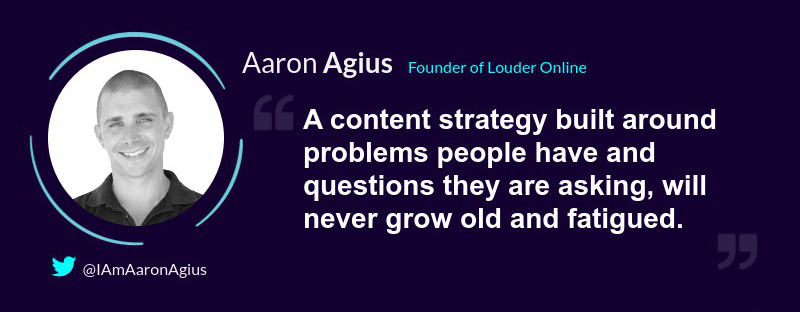
“A content strategy built around problems people have and questions they are asking will never grow old and fatigued. Stay on top of what people are asking for and looking for, and be the person to answer the questions and solve their problems for them, and your content will continue to shine.”
– Founder of Louder Online
[contextly_auto_sidebar]
Lina Wang

“In short, make sure you have something to offer. While there might be a lot of content available on the web, most people will agree that there’s still plenty of room for high-quality content. Figure out what your particular audience wants to hear, and play to your strengths—whether that’s expertise or entertainment.”
– CEO at Eight Shots
Pawan Deshpande
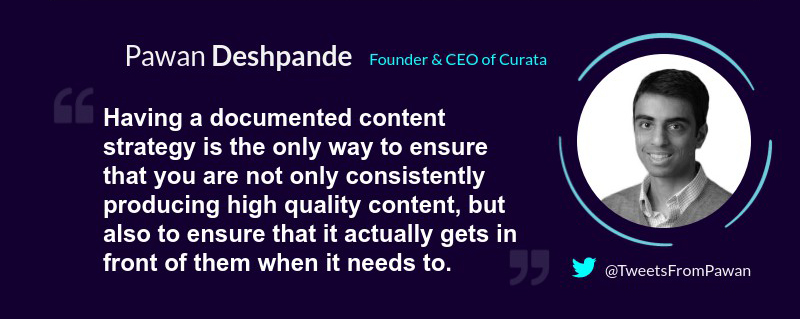
“Content shock and content fatigue refer to the same problem of too much content, but from a marketer’s perspective and a reader’s perspective, respectively. Having a documented content strategy is the only way to ensure that you are not only consistently (and economically) producing high quality content that is relevant to your audience’s needs, but also to ensure that it actually gets in front of them when it needs to.”
– Founder and CEO of Curata
Michael Gerard
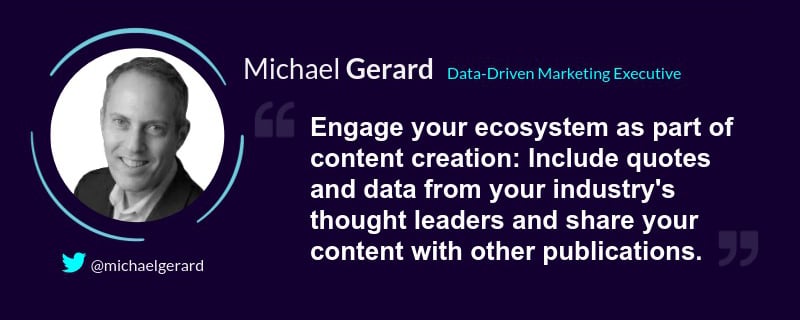
- “Publish less frequently, and make sure your content is damn good.
- Engage your ecosystem as part of content creation: Include quotes and data from your industry’s thought leaders, and share your content with other publications.
- Don’t be afraid to take chances: For example, create a survey to address your industry’s greatest challenges, question the status quo, or create a unique tool that will help your audience.”
– Data-Driven Marketing Executive
Tom Webster
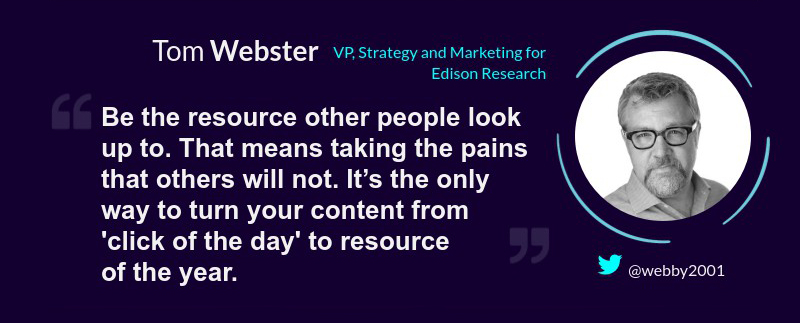
“Be the resource other people look up to. That means taking the pains that others will not. It’s the only way to turn your content from ‘click of the day’ to resource of the year.”
– VP, Strategy and Marketing for Edison Research
Cassio Politi
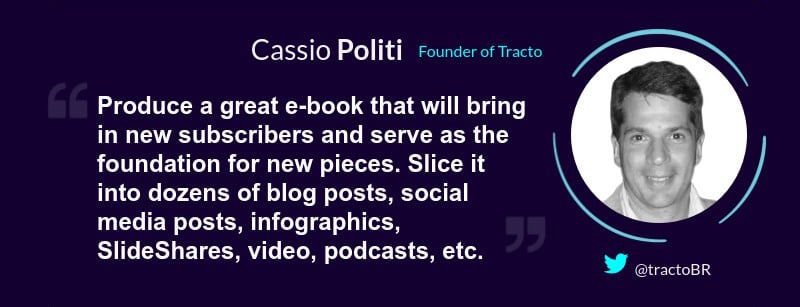
“The content fatigue is already a problematic reality. You create content, but your competitor creates it too. And both of you are getting better every day. So you really have to stand out by producing great content in a regular basis.
That’s why I love the idea of ‘COPE,’ which means ‘create once, publish everywhere.’ It’s something easy to do. Just put your content team together every two to three weeks, and make a decision of what special topic you are going to approach. Then your content producers spend a couple of days working hard in this very special topic. You will be able to produce a great ebook or white paper that not only will bring new subscribers but also is will be the foundation for new pieces.
You can slice that topic in five or ten blog posts, dozens of social media posts, infographics, SlideShares, video, podcasts, webinars, etc. It makes your life easy because you just have to approve this content once. If you schedule it wisely, the special content lasts for several weeks or months. If you run this cycle about 10 to 15 times a year, you will have special content being published the whole year with more quality and less effort.”
– Founder of Tracto
Meryl Evans
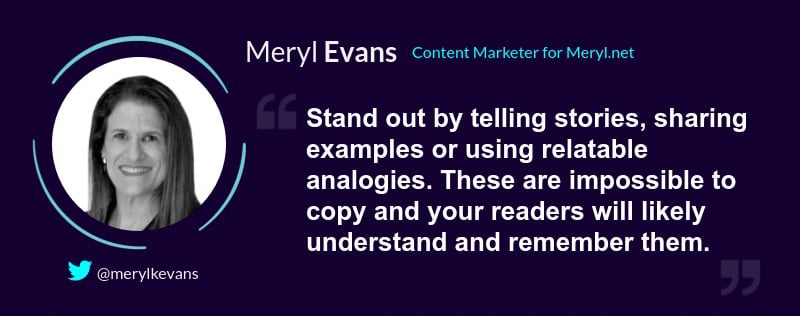
“You can stand out by telling stories, sharing examples, or using relatable analogies. These are almost impossible to copy, and your readers will more likely understand and remember them.”
– Content Marketer for Meryl.net
Cameron Conaway
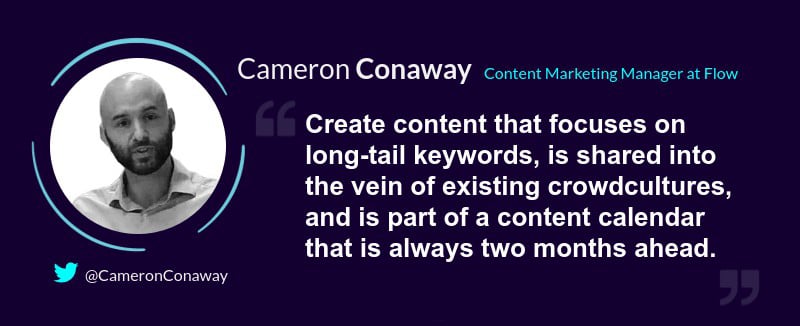
“Future-proofing content demands creating content that focuses on long-tail keywords, is shared into the vein of existing crowdcultures, and is part of a content calendar that is always two months ahead. Even the best content marketing strategy will break down if production becomes a rushed scramble from week to week.”
– Content Marketing Manager at Flow
David Burn
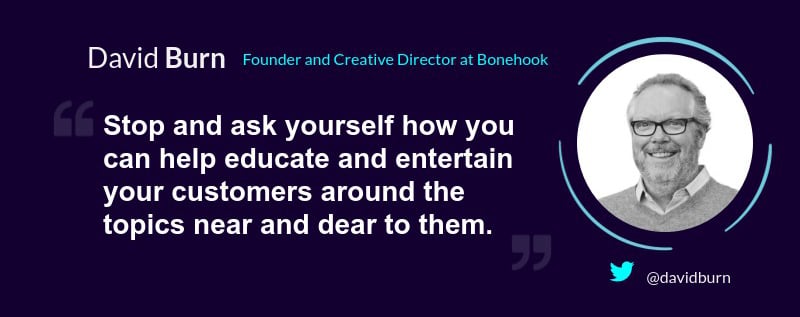
“What value are you bringing to the table, as a content provider? Are you deploying content because you read somewhere that you need to do that to stay current? Stop and ask how you can help educate and entertain your customers around the topics near and dear to them. Under Armour’s MyFitnessPal smartphone app is just one good example of branded utility that never wears out or becomes obsolete.”
– Founder and Creative Director at Bonehook
Russell Sparkman
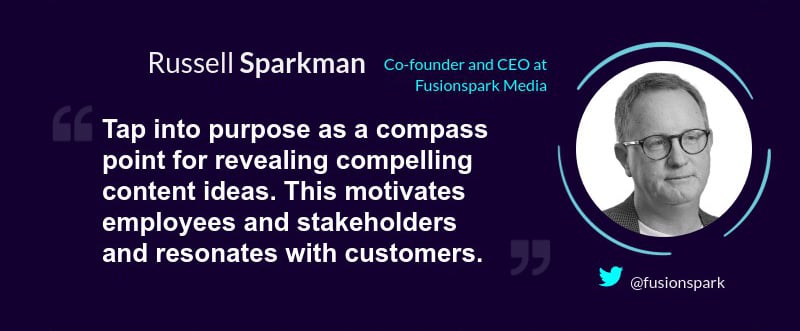
“By tapping into purpose as a compass point for revealing compelling content ideas, you will be able to tap into something that your company, or your brand, can claim as uniquely yours. When this happens, it motivates employees, teams, and stakeholders, resonates with customers, and provides you with a competitive advantage. This is the only sure way to future proof a content strategy in the face of the content deluge.”
– Co-founder and CEO at Fusionspark Media
James Malone
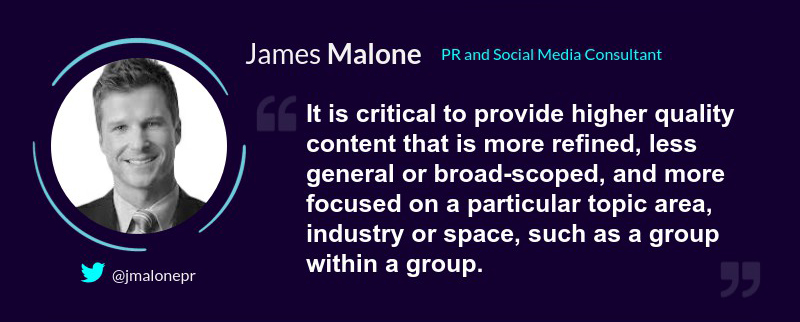
“As the social media world has developed with so many options for presenting content to a target audience, customers, and users, and in so many forms—images, videos, graphics, infographics, and good old fashioned copy—it is important for marketers and companies to provide higher quality content that is more refined, less general or broad-scoped, and more focused on a particular topic area, industry, or space, such as a group within a group. Additionally, visuals are important in the next stage of social media and content marketing. Using more images, videos, and infographics to present content is the future of content marketing.”
– Founder of Maxima PR
Bernie Borges
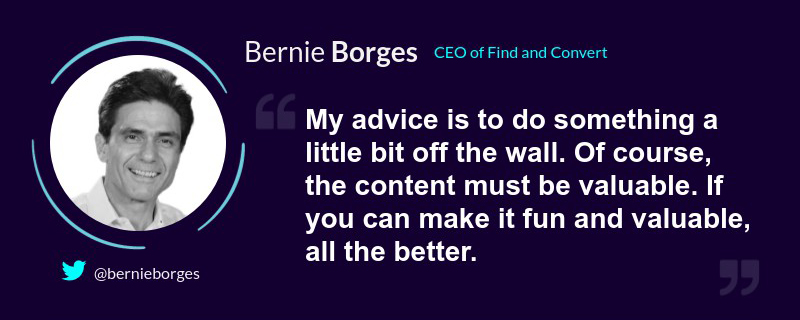
“My advice to future proof your content is to do something creative, maybe a little bit off-the-wall. People are saturated with content. Of course, the content must be valuable. If you can make it fun and valuable, all the better. Given a choice, people will prefer valuable content that’s fun over valuable content that’s boring.”
– CEO of Find and Convert
Jonathan Crossfield

“Forget about what might work today according to all the best practice listicles and silver bullet blog posts. Forget the formulas and the algorithms. Instead, focus on the people you want to reach. Consider not only what they are interested in today but also what they will want to know tomorrow. Quality content targets people and actions, not clicks and algorithms.”
– Storyteller and Content Marketer
Jeff Herrmann
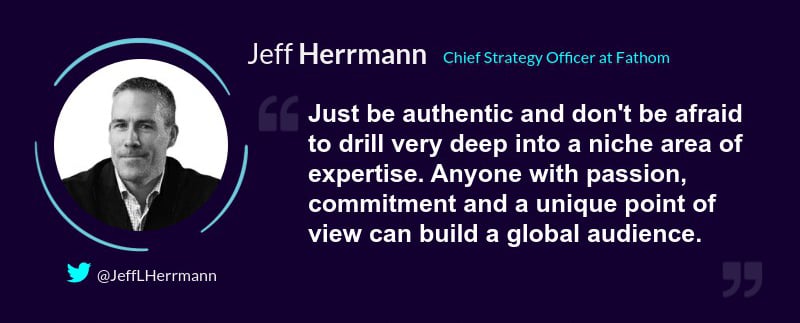
“Just be authentic, and don’t be afraid to drill very deep into a niche area of expertise. Anyone with passion, commitment, and a unique point of view can build a global audience. We all carry a content production and distribution studio in our hands—in my case, the iPhone 7+. Get personal, especially if you’re a B2B brand. Be unapologetic in designing your strategy and in your opinions.”
– Chief Strategy Officer at Fathom
Colleen Jones
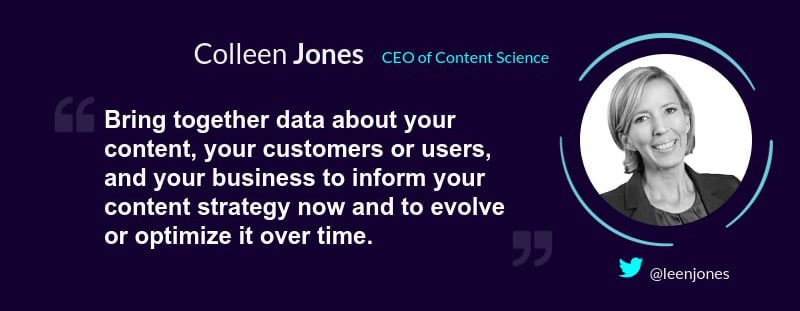
- “Content vision: Think big. And I don’t mean necessarily think more content. Think better content. Make the future bright. Plan ambitiously about what content can do for you and your business at scale. Learn the six characteristics of a kick-ass content vision here.
- Content engineering: You need to model your content in a structured way for optimal delivery across channels and devices, ranging from websites to cars to glasses to watches to who knows what else? We might not know where we’ll consume content next, but we do know how to make our content consumable and scalable. Hint: Modeling content with metadata is key.
- Content intelligence: Data. Data. Data. Bring together data about your content, your customers or users, and your business to inform your content strategy now and evolve or optimize it over time. That way, you will catch and fix problems early and identify opportunities to scale your success quickly.”
– CEO of Content Science
Randy Krum
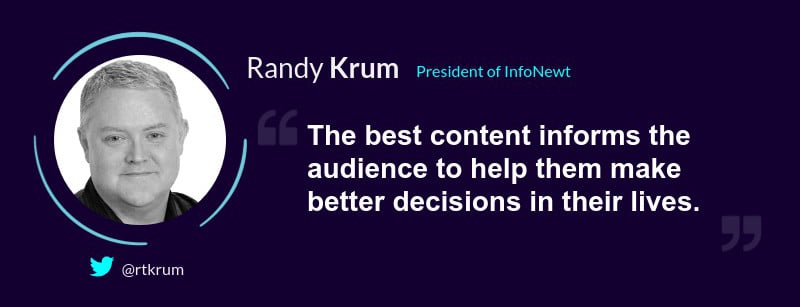
“There’s already more content than any of us alone could possibly consume, and this will continue to grow as more content is published online every day. The best content informs the audience to help them make better decisions in their lives. Some of the best infographics and data visualizations share these three important qualities:
- Understood Quickly: The information is shown as simply as possible, so the audience understands the information in only a few seconds.
- Memorable: Our brains are better at remembering visuals than text or numbers. Designing visuals that are unique and relevant to the content will make them more memorable to the audience.
- Actionable: The information should help the audience be better informed when they make decisions in life. Health choices, political choices, business decisions, buying decisions, and personal choices are all improved with better information.”
– President of InfoNewt
Get more content like this, plus the very BEST marketing education, totally free. Get our Definitive email newsletter.
